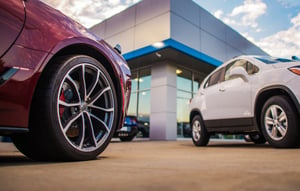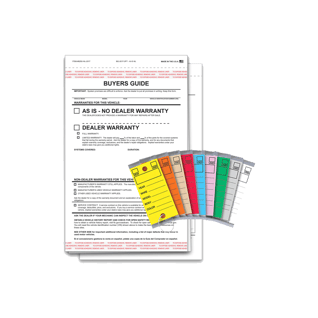
NH DOL Clarifies Youth Employment Prohibitions
Following a request from NHADA President Peter McNamara, the NH Dept. of Labor Commissioner Jim Craig very helpfully clarified how and when 17-year-olds can drive vehicles and 16- and 17-year-olds can operate lifts.
PARTNER SPOTLIGHT
Dealer Management System, Computer Technology, Media/Advertising, Automotive Auction, F & I/Aftermarket Products, Automotive Technology Training & Compliance
 A NHADA Gold PARTNER
A NHADA Gold PARTNERComputer Technology, Automotive Shop Equipment, Environmental Services
 A NHADA Platinum PARTNER
A NHADA Platinum PARTNERF & I/Aftermarket Products, Automotive Technology Training & Compliance, Environmental Services
.png?width=150&name=corp_logo_horz_on_light_with_trademark_symbol_1200w%20(002).png) A NHADA Diamond PARTNER
A NHADA Diamond PARTNERRSA 276-A and NH rules LAB 1000 set forth the requirements for youth employment in NH. LAB 1000 incorporates certain federal standards as set by the US Department of Labor (USDOL). Specifically, LAB 1003 requires that employers comply with certain federal orders that regulate youth employment in hazardous occupations, as dictated in the Child Labor Bulletin No 101 (CLB Nl 101) (http://bit.ly/CLB101) publication WH-1330, revised February 2013. CLB No 101 references and discusses 17 Hazardous Occupation orders (HOs), which delineate occupations determined too hazardous for minors under the age of 18 to work in. HO #2, as listed in the CLB No 101, addresses employed youths driving motor vehicles, and HO #7 addresses the use of hoisting apparatus by employed youths. There are some exemptions to certain HOs, including HO #2 and HO #7, that apply to employed minors of specified ages.
Seventeen-year-olds who are employed in the automobile service facilities are permitted to drive when the following standards/restrictions are met:
- The motor vehicle does not exceed 6000 pounds gross vehicle weight;
- Driving occurs during daylight hours;
- The 17-year-old has a state license valid for the type of driving involved in the job performed;
- The 17-year-old has completed a state-approved driver education course, with no record of moving violations at the time of hire;
- Driving takes place within a 30-mile radius of the 17-year-old's place of employment;
- The vehicle is equipped with a seat belt for the driver and any passengers, and the employer has given instruction to the 17-year-old that the seat belts must be used when driving;
- The driving is only occasional and incidental to the 17-year-old's employment. Occasional and incidental is defined by CLB No 101 and HO #2 as no more than one-third of the 17-year-old's worktime in any workday, and no more than 20 percent of the 17-year-old's worktime in any workweek.
Furthermore, the driving performed by the 17-year-old may not involve the following activities:
- Towing of vehicles;
- Route deliveries or route sales;
- Any transportation-for-hire of goods, passengers, or property;
- Urgent, time-sensitive deliveries;
- Transporting more than three passengers, including employees of the employer;
- Driving more than 30 miles from the 17-year-old's place of employment;
- More than two trips away from the primary place of employment in any single day to deliver goods of the employer's to customers;
- More than two trips away from the primary place of employment in any single day to transport passengers, other than employees of the employer.
There has been confusion as to whether 16- and 17-year-olds employed in the automotive industry are permitted to operate lifts. The federal standard defines hoisting apparatus, HO #7, as a hazardous occupation for youths, and they are prohibited from engaging in the use of power driven hoisting apparatus including forklifts, non-automotive elevators, skid steers and steer loaders, backhoes, man-lifts, scissor lifts, cherry pickers, work-assist platforms, boon trucks and cranes.
However, lifts to raise automobiles in automotive and gas service stations are not specifically excluded. The US DOL Field Operations Handbook does not specifically ban employed youths aged 16 and 17 from automotive and truck servicing establishments. The operations guide clarifies that grease rack lifts used in gasoline service stations, tire stores and other establishments that service automobiles are not prohibited activities under HO #7. The operations handbook also indicates that service jacks, hand jacks, air compressors, tire changers, truck tire changers and wheel balancers are all not prohibited activities under HO #7.
Commissioner James Craig stated that, "activity falling within the above-referenced exceptions from the restrictions set forth in HO #7 would not be considered to violate the NH DOL regulation." He does note that the, "NH DOL cannot definitively speak to any possible/prospective US DOL consideration of the topic."
Any NHADA member employing youths under the age of 18 should do so with extreme caution. According to the NH DOL interpretation of the US DOL statute and field operations handbook, 17-year-olds may drive as outlined above and 16- and 17-year-olds may operate lifts and other equipment as outlined above.
Please make sure that every employee, particularly youths, are properly trained and supervised on all equipment prior to use. Please ensure that youths understand what to do in the event of an injury. Please remember that youths must be drug tested before they begin work. Please note that the youth applicant as well as a parent or guardian must sign the pre-placement drug testing and consent form.
Contact me if you have questions at 800-852-3372 or by email at psheffer@nhada.com.



















.png?width=150&name=Ally_Final%20Logos%20and%20Pairings_11.14.2018-01%20(2).png)


-2.png?width=150&name=Wipfli%20Logo%20Blue%20RGB%20(1)-2.png)


.jpg?width=150&name=NHADA_Partner_FTR_Img_NHADA_Insurance%20(1).jpg)


.jpg?width=150&name=NHADA_Partner_FTR_Img_JMA(1).jpg)

